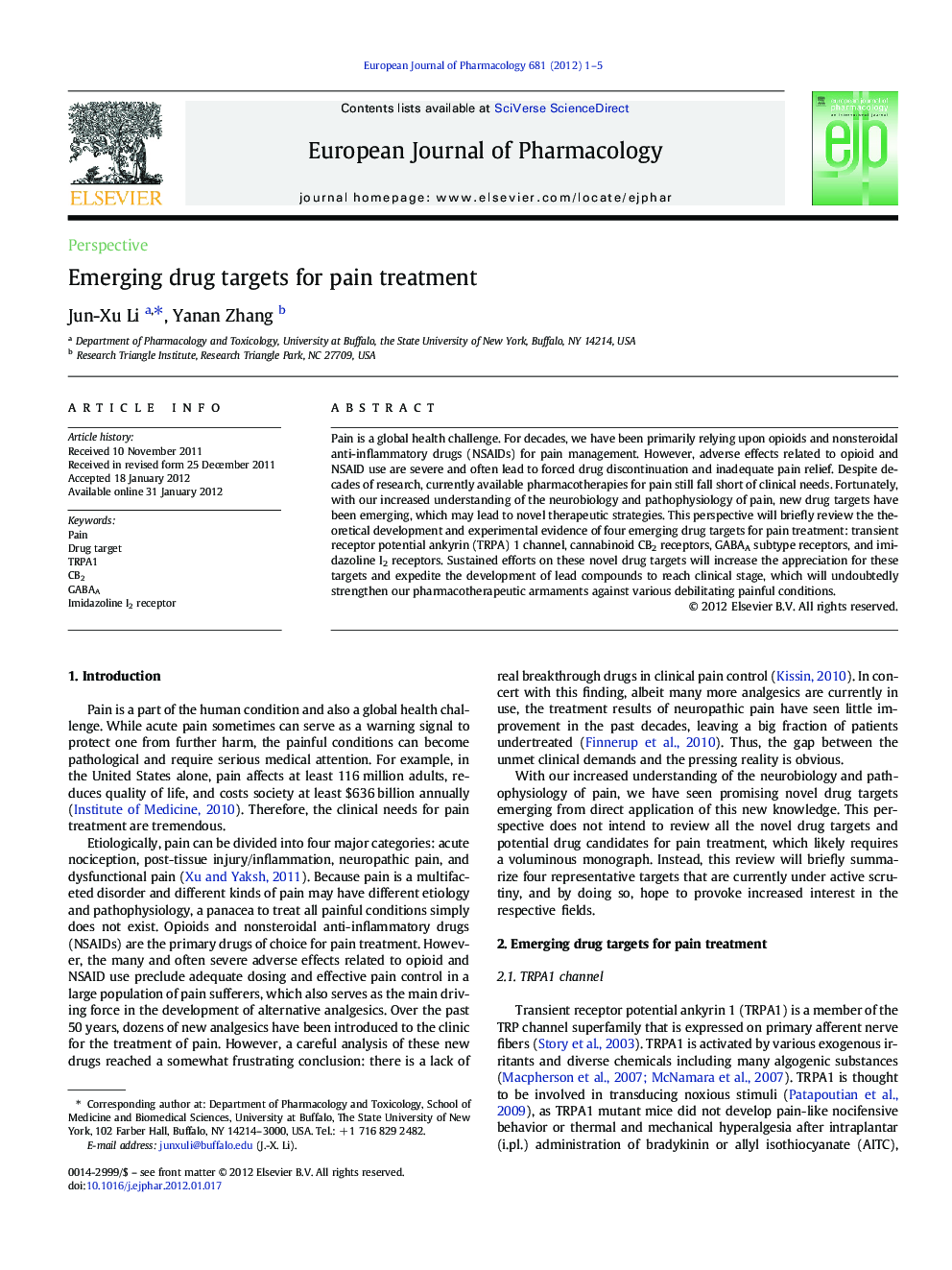| Article ID | Journal | Published Year | Pages | File Type |
|---|---|---|---|---|
| 2532361 | European Journal of Pharmacology | 2012 | 5 Pages |
Pain is a global health challenge. For decades, we have been primarily relying upon opioids and nonsteroidal anti-inflammatory drugs (NSAIDs) for pain management. However, adverse effects related to opioid and NSAID use are severe and often lead to forced drug discontinuation and inadequate pain relief. Despite decades of research, currently available pharmacotherapies for pain still fall short of clinical needs. Fortunately, with our increased understanding of the neurobiology and pathophysiology of pain, new drug targets have been emerging, which may lead to novel therapeutic strategies. This perspective will briefly review the theoretical development and experimental evidence of four emerging drug targets for pain treatment: transient receptor potential ankyrin (TRPA) 1 channel, cannabinoid CB2 receptors, GABAA subtype receptors, and imidazoline I2 receptors. Sustained efforts on these novel drug targets will increase the appreciation for these targets and expedite the development of lead compounds to reach clinical stage, which will undoubtedly strengthen our pharmacotherapeutic armaments against various debilitating painful conditions.
